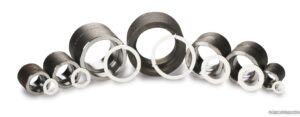Gouging Electrodes: Types, Uses, and Advantages in Metal Removal
Gouging electrodes are a specialized type of electrode used in the metalworking and welding industries for the rapid removal of metal. They are most commonly used in a process called air carbon arc gouging (CAC-A), where an electric arc melts the metal and a blast of compressed air blows the molten material away. This allows for precise and efficient cutting, shaping, or removal of defective welds and metals.
What are Gouging Electrodes?
Gouging electrodes are made from carbon and graphite, often coated with a copper layer to enhance conductivity and reduce oxidation. They are designed to create a stable arc and withstand high temperatures, enabling clean and fast metal removal. These electrodes are essential in heavy fabrication, shipbuilding, pipeline work, and maintenance tasks.
How Gouging Electrodes Work
The gouging process begins by striking an arc between the gouging electrode and the workpiece. The intense heat from the arc melts the metal, and simultaneously, a high-velocity jet of compressed air blows the molten material away from the groove. This leaves a clean, gouged channel that can be re-welded, repaired, or reshaped.
Types of Gouging Electrodes
- Pointed Gouging Electrodes
Tapered at one end for precision gouging. Ideal for narrow, controlled grooves and removing small weld defects. - Flat Gouging Electrodes
Feature a flat end for wide gouging operations. Useful for removing large amounts of metal quickly and evenly. - Jointed Electrodes
Designed with threaded ends for continuous gouging. Perfect for long gouging tasks where electrode changes must be minimized. - Copper-Coated Electrodes
Enhance conductivity and reduce wear during high-amperage operations. Commonly used in industrial and shipyard settings.
Common Applications
Gouging electrodes are used in a wide range of industries for several purposes:
- Weld Removal: Removing defective or old welds during repair or rework.
- Crack Preparation: Creating grooves in cracked sections before re-welding.
- Edge Preparation: Forming edges for full-penetration welds in thick plates.
- Metal Shaping: Sculpting or removing material in fabrication processes.
- Surface Cleaning: Removing surface defects, slag, or contaminants.
Benefits of Using Gouging Electrodes
- High Efficiency: Quickly removes large volumes of metal with minimal effort.
- Cost-Effective: Reduces the need for grinding or mechanical cutting.
- Precision: Offers accurate control for detailed gouging work.
- Versatility: Works on a wide range of metals, including steel, stainless steel, and cast iron.
- Portability: Can be used in fieldwork without needing complex equipment.
Safety Tips for Gouging
- Always wear appropriate PPE, including face shields, gloves, and fire-resistant clothing.
- Ensure adequate ventilation to avoid inhaling fumes and metal dust.
- Secure the workpiece properly to prevent movement during gouging.
- Keep the air supply clean and dry for consistent results.
Conclusion
Gouging electrodes are essential tools in the metal fabrication and welding industry, providing a fast, precise, and economical solution for removing or reshaping metal. Whether you’re preparing a weld joint, repairing a structural component, or cleaning a surface, gouging electrodes can help you get the job done with efficiency and precision.





















